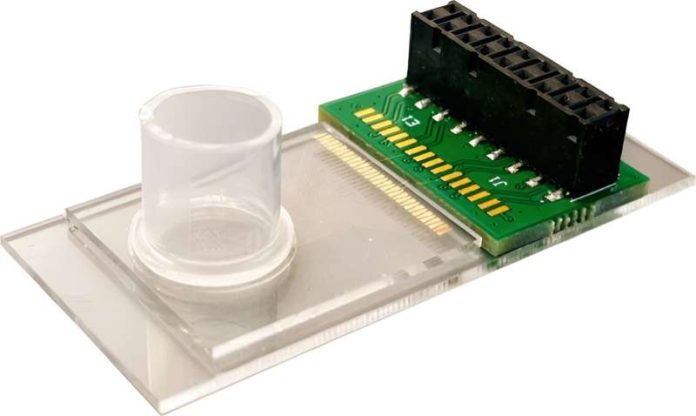
In a groundbreaking stride for biomedical engineering, researchers at UMass Amherst have innovated a unique method that escalates DNA detection’s sensitivity, heralding a transformative impact on disease detection and diagnosis.
A New Dance in DNA Detection
Jinglei Ping, the spearhead of the study and an adept in mechanical, industrial, and biomedical engineering, illuminated the vital role DNA detection plays in bioengineering.
“Finding DNA is like finding a needle in a haystack,” he says, indicating the complexity and precision involved in locating specific DNA among myriads of molecules, especially when it’s in low concentrations.
The innovation lays in a unique methodology where the DNA is made to “dance.” The team applies an alternating electric field to the test sample, inducing the DNA strands to oscillate in a specific pattern or frequency.
These oscillations, or the “dances,” are distinctive to the target DNA, making it discernible even amidst various molecules and particularly when it is present in minimal concentrations.
Faster, Sensitive, and Pocket-Sized DNA Detection
This innovative approach not only improves sensitivity astonishingly, by roughly 100 times, but it also significantly accelerates the DNA detection process.
Traditional DNA detection often involves lab processes that, while accurate, can stretch over days, weeks, or even months, depending on the complexity of the tests and the concentrations of the DNA.
In stark contrast, Ping’s method yields almost instantaneous results, unlocking potentials for swift diagnoses and timely interventions in disease management.
The tool is likened to a blood sugar test device in size, offering portability which is crucial in expanding healthcare reach, especially in resource-scarce regions.
Ping recalls doctors visiting remote villages maybe once or twice a year, but with this tool, there’s potential for more consistent, reliable, and immediate healthcare access.
DNA tests, which earlier needed to be dispatched to distant labs and awaited for prolonged periods, can now be executed in minutes, on-site.
Implications: Early Diagnoses and Global Health Improvements
The implications of this development are immense and multifaceted, especially in the early detection of diseases.
Early diagnosis often paves the way for more effective and less invasive treatments, sometimes even curtailing the progression of diseases before they escalate into more perilous stages.
The device’s portability also implies a leap towards democratizing health technology, enabling even remote or less resource-endowed regions to access sophisticated DNA testing.
Such technological dispersion can critically elevate global health standards, making advanced diagnostics a standard practice rather than a luxury.
Moreover, Ping envisages the integration of this nano-mechanoelectrical approach with advanced bioengineering technologies, like CRISPR, to illuminate nucleic acid signaling pathways, decipher disease mechanisms, pinpoint novel drug targets, and formulate personalized treatment strategies, including therapies targeted at microRNA.
In a world increasingly reliant on timely and precise healthcare, the rapid and sensitive detection of DNA, right from minute concentrations, becomes paramount.
This methodology, therefore, stands not merely as a scientific innovation but as a potential cornerstone for the next leap in global healthcare, bridging gaps from high-end labs to remote villages.
Xiaoyu Zhang, a graduate research assistant from Ping Lab, will present this fascinating study at the Biomedical Engineering Society annual meeting, offering deeper insights into a technology that might just redefine how we approach disease detection and management in the future.
The research findings can be found in PNAS.
Follow us on Twitter for more articles about this topic.
Copyright © 2023 Knowridge Science Report. All rights reserved.



